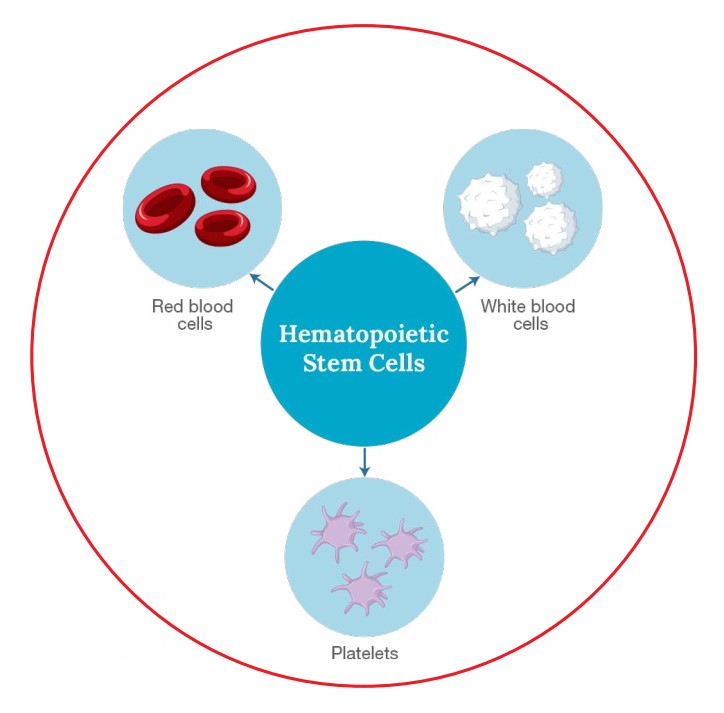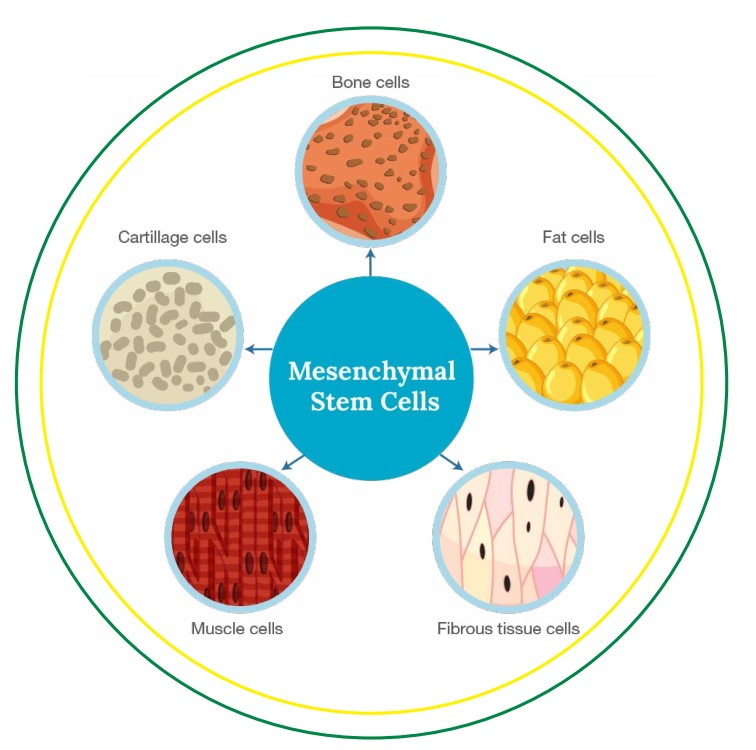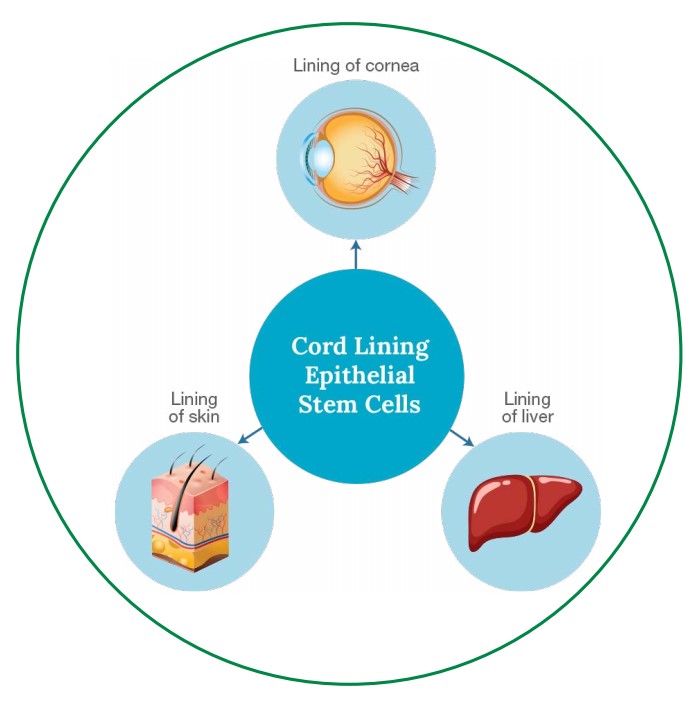
Umbilical cord stem cells are at the forefront of one of the most fascinating and revolutionary areas of medicine today.
Getting Started
Potential Applications of Umbilical Cord Stem Cells
Umbilical cord has the youngest and most active stem cells among other sources of stem cells. The umbilical cord contains cord blood stem cells, cord lining stem cells, and cord tissue stem cells. Each type of umbilical cord stem cells has different applications and can potentially treat critical illnesses. Stem cells in the umbilical cord are thought to have the most potential in the field of regenerative medicine.
Most commonly researched stem cell treatments

Leukemia and other blood cancers
Autism
Cardiovascular Diseases
Diabetes
The umbilical cord contains
cord blood, cord lining and cord tissue



Cord Blood
Cord Lining
Cord Tissue
Cord blood is a rich source of hematopoietic stem cells or HSCs that have the ability to differentiate into red blood cells responsible for the oxygenation of the blood, into white blood cells which assist in antibody stimulation and fight infection, and into platelets, which are involved in the clotting process.
Cord tissue and cord lining are great sources of mesenchymal stem cells or MSCs that can differentiate into bone, muscle, fat, cartilage cells and fibrous tissues. MSCs can reduce inflammation and can repair, replenish and rejuvenate the damaged tissues and cells. Apart from MSCs, you can also obtain another type of stem cells from the cord lining called the cord lining epithelial stem cells.
Preserving all your baby’s umbilical cord stem cells gives you access to more medical options in the future.
Diseases treated with umbilical cord stem cells and other potential applications
Cord blood: Standard therapies
BLOOD CANCERS
- Acute Myelogenous Leukemia
- Acute Lymphoblastic Leukemia
- Chronic Myelogenous Leukemia
- Histiocytic Neoplasms
- Other Myeloproliferative Neoplasms
- Myelodysplastic Syndrome
- Multiple Myeloma
- Plasma Cell Leukemia
- Systemic Mastocytosis
- Waldenstrom’s Macroglobulinemia
SOLID TUMORS
- Hodgkin Lymphoma
- Non-Hodgkin Lymphoma
- Langerhans’ Cell Histiocytosis
- Neuroblastoma
- Retinoblastoma
NON-MALIGNANT BLOOD DISORDERS
- Aplastic Anemia
- Chediak-Higashi Syndrome
- Congenital Dyserythropoietic Anemia
- Diamond-Blackfan Syndrome
- DiGeorge Syndrome
- Evans Syndrome
- Fanconi Anemia
- Glanzmann Thrombasthenia
- Gunther Disease (erythropoietic porphyria)
- Hereditary BM Failure Syndromes
- Hemophagocytic Lymphohistiocytosis
- Leukocyte Adhesion Deficiency
- Paroxysmal Nocturnal Hemoglobinuria
- Pure Red Cell Aplasia
- Sickle Cell Anemia
- Thalassemia Major
IMMUNODEFICIENCY DISORDERS
- Chronic Granulomatous Disease
- Common Variable Immunodeficiency
- Cartilage-Hair Hypoplasia
- Reticular Dysgenesis
- Severe Combined Immune Deficiency (SCID)
- Shwachman-Diamond Syndrome
- Wiskott-Aldrich Syndrome
METABOLIC DISORDERS
- Adrenoleukodystrophy
- Gaucher Disease
- Hurler Syndrome
- Hunter Syndrome
- Krabbe Disease
- Lesch-Nyhan Syndrome
- Maroteaux-Lamy Syndrome
- Metachromatic leukodystrophy
- Osteopetrosis
- Sly Syndrome, Beta-Glucuronidase Deficiency
- Wolman Disease
Cord blood: Clinical trials
- Autism
- Brain Tumor
- Cartilage Repair
- Cleft Palate Repair (Alveolar)
- Cerebral Palsy
- Crohn Disease
- Critical Limb Ischemia
- Diabetes Type 1
- Epidermolysis Bullosa
- Ewing Sarcoma
- Graft-versus-Host Disease (GvHD)
- Hypoxic Ischemic
- Encephalopathy (HIE)
- Hearing Loss
- HIV
- Ischemic Stroke
- Lupus
- Multiple Sclerosis
- Myocardial Infarction
- Ovarian Cancer
- Rheumatoid Arthritis
- Spinal cord injury
- Scleroderma
- Testicular Tumour
Cord lining and cord tissue: Mesenchymal stem cells (MSCs)
As of August 2025, there are more than 1000* clinical trials using mesenchymal stem cells worldwide.
Mesenchymal stem cells applications
TISSUE REPAIR
- Stroke
- Cardiovascular diseases
- Neurodegenerative diseases (eg Alzheimer disease, Parkinson disease)
- Autism, cerebral palsy, global developmental delay
- Spinal cord injury
- Orthopedic indications (osteoarthritis, cartilage, tendon repair)
- Liver regeneration from liver failure
- COVID-19 Pneumonia
IMMUNE MODULATION OR RECONSTRUCTION
- HIV
- Diabetes (Type 1 and 2)
- Prevention and treatment of Graft versus Host Disease (GvHD)
- Crohn disease
HSCs ENGRAFTMENT SUPPORT
- Shorten time of engraftment
- Reduce immune system complications
Cord lining: Epithelial cells and epithelial stem cells
Another type of stem cells called Cord Lining Epithelial Cells can be found and obtained from the cord lining.
Epithelial cells and epithelial stem cells applications
- Ischemic stroke
- Persistent corneal epithelial defect
References
- Diseases treated page. Parent’s Guide to Cord Blood Foundation. https://parentsguidecordblood.org/en/diseases. Accessed August 04, 2025.
- Potential Future Uses in Regenerative Medicine. Cord Blood Registry Website. https://www.cordblood.com/science-in-action. Accessed August 04, 2025.
- Clinical trial registry page. ClinicalTrials.gov. https://clinicaltrials.gov. Accessed August 04, 2025.
- NIH U.S. National Library of Medicine. www.clinical trials.gov. Search term used “mesenchymal stem cells”. Last accessed August 20, 2025.
Save your baby's cord blood now
to give your child access to his/her own stem cells.
Cryopreserved exclusively for your own family
Your baby’s cord blood will be kept solely for your family, and we will conduct regular checks to ensure that it remains in good condition throughout the storage period.
Retrieve whenever you need
If the cord blood is required for a treatment, Cordlife will provide one-time payment of up to SGD50,000 to partially cover medical costs of transplantation for the child whose cord blood unit is stored (autologous use), the child’s biological siblings, biological parents or biological grandparents applicable for use in standard treatment at any accredited hospital in the Philippines.
Insurance-backed transplant coverage
We've partnered with an insurance company to help you with medical expenses in the unfortunate event of a cord blood transplant, relieving your financial burdens during this difficult time.

Why save your baby’s umbilical cord blood, cord tissue and cord lining?

Rich source of
stem cells
Your baby’s umbilical cord has the youngest and most active stem cells compared with other stem cell sources such as embryo, bone marrow, and peripheral blood.

Proven use in
transplants
More than 80 diseases can potentially be treated with cord blood, and over 60,000 transplants have taken place worldwide.

Untapped
clinical potential
Researchers all over the world are learning how to use stem cells to treat more diseases and repair damaged tissue or organs.

Treatment options
for the family
The stem cells you stored are a perfect match for your baby, and they could be used to treat other members of your family.

Readily available
for a lifetime
Stem cells can be kept indefinitely if they are properly stored, and you can retrieve them whenever you need them.

